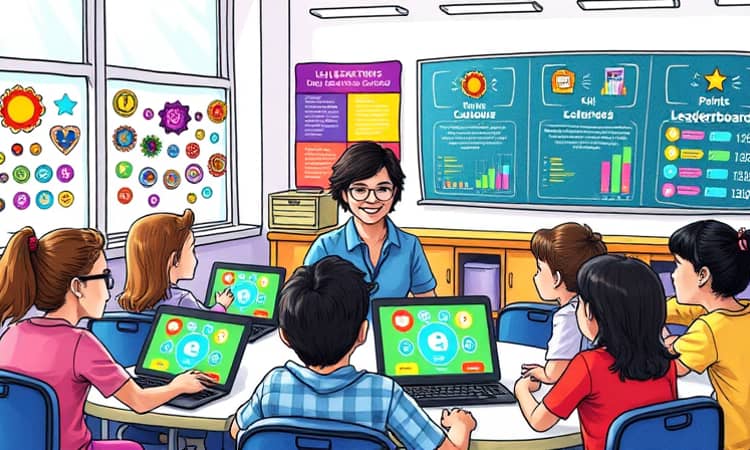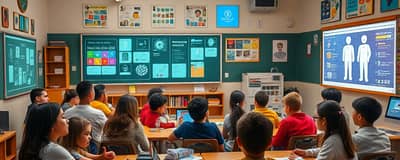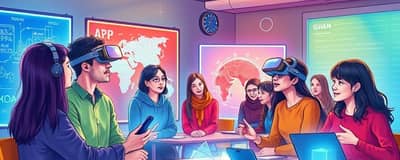In an age where attention spans are challenged and motivation fluctuates, gamification offers a powerful remedy. By weaving game elements into lessons, educators can foster deeper engagement and lasting retention.
What Is Gamification in Education?
Gamification in education refers to the integration of game elements—such as point scoring, progress tracking, badges, leaderboards, and reward systems—into learning environments. Unlike pure game-based learning, which centers on playing standalone educational games, gamification layers game mechanics onto existing curricula.
These mechanics transform passive learning into interactive experiences, inviting students to become active participants. When students see immediate feedback and tangible rewards, the learning process becomes dynamic and goal-oriented.
Core Benefits of Gamification
Educational research consistently highlights significant advantages when gamification is implemented thoughtfully. Below is a concise summary:
For example, students using a gamified fractions platform recorded remarkable gains in math proficiency within weeks, demonstrating that well-designed game elements can accelerate concept mastery.
The Science Behind Gamification
Several well-established learning theories illuminate why gamification works:
Self-Determination Theory posits that satisfying autonomy, competence, and relatedness fuels intrinsic motivation. Gamified tasks often allow learners to choose challenges, monitor progress, and collaborate with peers, fostering a sense of ownership.
Operant Conditioning reinforces positive behaviors through rewards. When students earn badges or points for correct answers, they associate learning activities with enjoyable outcomes, increasing the likelihood of repeat engagement.
Cognitive Load Theory suggests that breaking complex information into smaller, game-like modules reduces mental overload. By tackling bite-sized challenges, learners build confidence and steadily absorb difficult material.
Practical Implementation Strategies
- Leaderboards spark friendly competition by showcasing top performers, while encouraging others to improve.
- Collaborative quests and team challenges empower students to celebrate each other’s progress and develop social skills.
- Real-world scenarios connect abstract concepts to practical applications, making lessons feel relevant and meaningful.
Implementing these strategies requires careful alignment with learning objectives. Teachers can start small—introducing badges for mastering key vocabulary or points for completing lab experiments—and expand over time.
Voices from the Classroom
Feedback from both students and educators underscores the transformative potential of gamification. Students often express greater enthusiasm, noting that game elements make lessons feel less like routine work and more like an adventure.
Teachers report fewer behavioral disruptions and higher levels of on-task behavior, leading to smoother classroom management. Many highlight that gamification has improved classroom morale, creating a sense of camaraderie and shared purpose.
Future Trends in Gamified Learning
- AI personalization customizes challenges and rewards based on individual performance, ensuring each learner receives the right level of support.
- AR/VR immersion transports students into simulated environments—historical events, virtual science labs, or interactive expeditions—that deepen understanding.
- Blockchain credentials provide secure, verifiable badges and certificates that learners can showcase in digital portfolios.
As these technologies mature, educators will have an expanding toolkit for crafting experiences that captivate and educate simultaneously.
Overcoming Challenges
Despite its promise, gamification is not without hurdles. Short-term studies have sometimes shown limited sustained impact, suggesting the need for ongoing research and iterative design.
Educators must ensure that game mechanics align with pedagogical goals rather than overshadow content. Overemphasis on competition can alienate some learners, so balancing collaborative elements is crucial.
To foster long-term success, schools should invest in professional development, equipping teachers with the skills to design, implement, and assess gamified modules effectively.
Conclusion
Gamification in education represents more than a trend—it is a paradigm shift toward engaging, student-centered learning. By leveraging game elements thoughtfully, educators can ignite curiosity, strengthen retention, and cultivate a lifelong love of learning.
As technology evolves, the synergy between gaming and education will only deepen. Schools and teachers who embrace these approaches today stand to empower the next generation with both the knowledge and the motivation to thrive.
References
- https://ssec.si.edu/stemvisions-blog/5-benefits-gamification
- https://www.learnlight.com/en/articles/5-benefits-of-gamification-in-learning/
- https://www.edutopia.org/article/using-gamification-ignite-student-learning/
- https://blog.mimio.com/gamification-in-education-7-benefits-of-engaging-students-through-playful-learning
- https://reflex.explorelearning.com/resources/insights/benefits-of-gamification-in-classroom
- https://elearningindustry.com/gamification-in-learning-enhancing-engagement-and-retention-in-2025
- https://openriver.winona.edu/cgi/viewcontent.cgi?article=1059&context=leadershipeducationcapstones
- https://sphero.com/blogs/news/gamification-in-education














